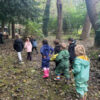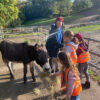
by Poppy O’Neill
Author of Be Brave: A Child’s Guide to Overcoming Shyness
If you’re concerned about your child’s shyness, you’re not alone. The pandemic has profoundly altered our social lives and how we interact with each other, and children are no different.
We use the word ‘shy’ to describe many behaviours – being an introvert, social anxiety, speaking softly – so it’s important to note that there’s nothing wrong with those labelled ‘shy’. Enjoying time alone and choosing when to use your voice can be really positive traits. However, shyness can also indicate anxiety around social situations, trying new things and being your authentic self.
Perhaps your child is struggling to make friends, or seems to fade into the background when around others. Maybe they’ve been stung by bullying or teasing in the past, or they avoid taking risks because the idea of speaking up or failing is too frightening for them. The thing about bravery is, it’s not about being fearless – it’s about feeling uncomfortable emotions and persevering anyway.
With your support and patience, it’s possible to build bravery and self-assurance so your child can face challenges, be themselves and grow into a confident, happy and well-balanced young person.
The best thing you can do for your child is to accept them as they are and be patient with them. It might feel tempting to dismiss feelings of shyness or anxiety and encourage your child to go ‘in at the deep end’ but the sad truth is, while this may change their behaviour in the short term, it doesn’t get to the root of what’s going on emotionally for them. If your child is shy, it’s already difficult for them, and extra pressure makes it doubly so.
Comparing your child to others is another big no-no. It can be tempting to point out how confident their friends seem, but this can backfire, causing your child to feel bad about themselves and even more shy. Instead celebrate differences and point out the things that make others unique, as well as what you admire about your child. Acknowledge how important small achievements can be, and how everyone struggles with different things. Your love and acceptance will help them view their own shyness in a new light – allowing them to break free of the ways in which shyness holds them back.
Let your child know that you are on their team and it’s OK to struggle with shyness. Listen to them without judgement and together you can work out what parts of life they need a bit of extra support with. Take your cues from your child: what helps is very personal and varies from child to child. It might help to role-play social situations together, do a ‘dry run’ of a daunting upcoming event or practice your big, most confident voices together. Talking through your child’s biggest challenges and breaking them down into smaller, more manageable chunks can be a really useful exercise – you could draw a comic strip, make a star chart or plan out steps towards progress over the course of a month.
Real bravery is different to how it looks in books and movies. In real life, being brave can mean saying “no” to something you feel obliged to do but really don’t want to – or saying “yes” to something that might inconvenience others. It can mean speaking up in a work meeting or saying “sorry” when you mess up. The same goes for children: the bravest child in the class is often the one who comes last in a race or the one whose voice shakes when they speak.
When children feel understood by the adults around them, they feel more able to strike out on their own, use their voice and be brave. Let your child know that they can take their time and that you are there for them for as long as they need you to be. When a child hears this, it helps them relax, take the pressure off themselves and push themselves in ways that feel comfortable, because they know that you will be kind and understanding, even if things don’t go according to plan or they’re not ready.
Being a kind, empathetic listening ear will help your child grow emotionally strong and resilient. As your child grows, they will be secure in the knowledge that you are on their team and there for them no matter what.
It’s so hard to see your child missing out or shrinking themselves out of shyness, but there’s a lot you can do to support them when you acknowledge their feelings and guide them towards ways to build up their bravery and self-assurance.
Poppy O’Neill has written several books on mental wellbeing for children and adults, including Amazon bestsellers Don’t Worry, Be Happy, You’re a Star and Be Brave: A Child’s Guide to Overcoming Shyness
Find her online at www.poppyoneill.wordpress.com



 All that is needed is a bit of curiosity, a playful attitude and maybe a tiny bit of know-how. Paying attention to the ordinary and everyday that might have escaped our notice for years, can open the door to tiny adventures close to home. Outdoor play is not just a ‘nice to have’, it is essential for children to experience the world to learn about it and their place in it.
All that is needed is a bit of curiosity, a playful attitude and maybe a tiny bit of know-how. Paying attention to the ordinary and everyday that might have escaped our notice for years, can open the door to tiny adventures close to home. Outdoor play is not just a ‘nice to have’, it is essential for children to experience the world to learn about it and their place in it. Learning about our neighbour-hood nature connects us to where we live and makes us feel more at home. The more time spent outdoors, the more you notice the patterns of the changing seasons; get to know the sights, sounds and smells of your local wildlife; and enjoy ‘slow time’ as you lose yourself in the fascination of nature. Creativity, resilience and positive attitudes towards the environment and exercise are forged in outdoor play. Understandable fears of busy roads and encounters with strangers can make parents and carers feel anxious about letting their children and young people play out of sight but it is vital that all young people have opportunities for unstructured outdoor adventures.
Learning about our neighbour-hood nature connects us to where we live and makes us feel more at home. The more time spent outdoors, the more you notice the patterns of the changing seasons; get to know the sights, sounds and smells of your local wildlife; and enjoy ‘slow time’ as you lose yourself in the fascination of nature. Creativity, resilience and positive attitudes towards the environment and exercise are forged in outdoor play. Understandable fears of busy roads and encounters with strangers can make parents and carers feel anxious about letting their children and young people play out of sight but it is vital that all young people have opportunities for unstructured outdoor adventures.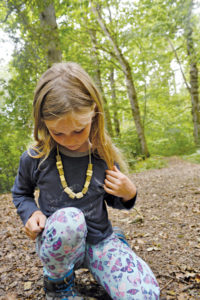 On your wild days out, it is very important to remember that the world is not a playground for humans but the habitat for us and all other living things. At the very least, we should try and leave as little trace of our activities as possible. It would be fantastic if we could leave things in an even better state than we found them and to have a positive impact on our environment.
On your wild days out, it is very important to remember that the world is not a playground for humans but the habitat for us and all other living things. At the very least, we should try and leave as little trace of our activities as possible. It would be fantastic if we could leave things in an even better state than we found them and to have a positive impact on our environment.

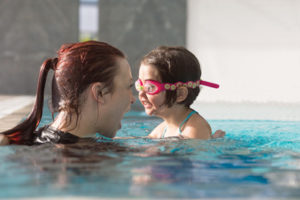 3. Swimming is a mood booster
3. Swimming is a mood booster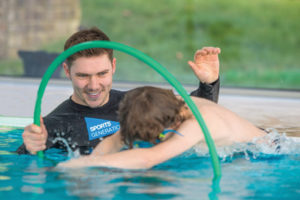 4. Swimming can make your child smarter
4. Swimming can make your child smarter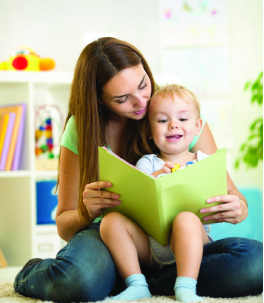



 Alternative social interaction
Alternative social interaction